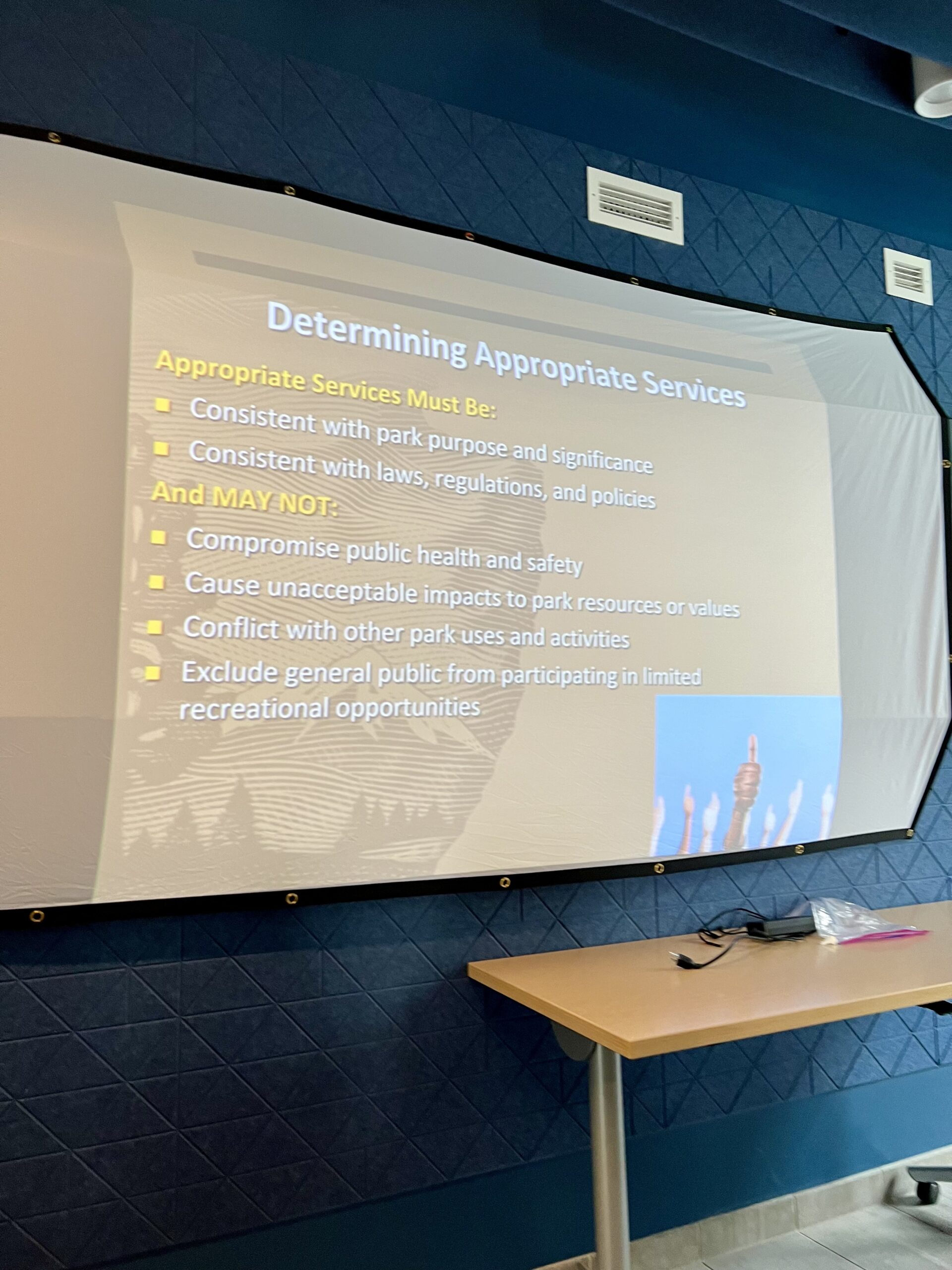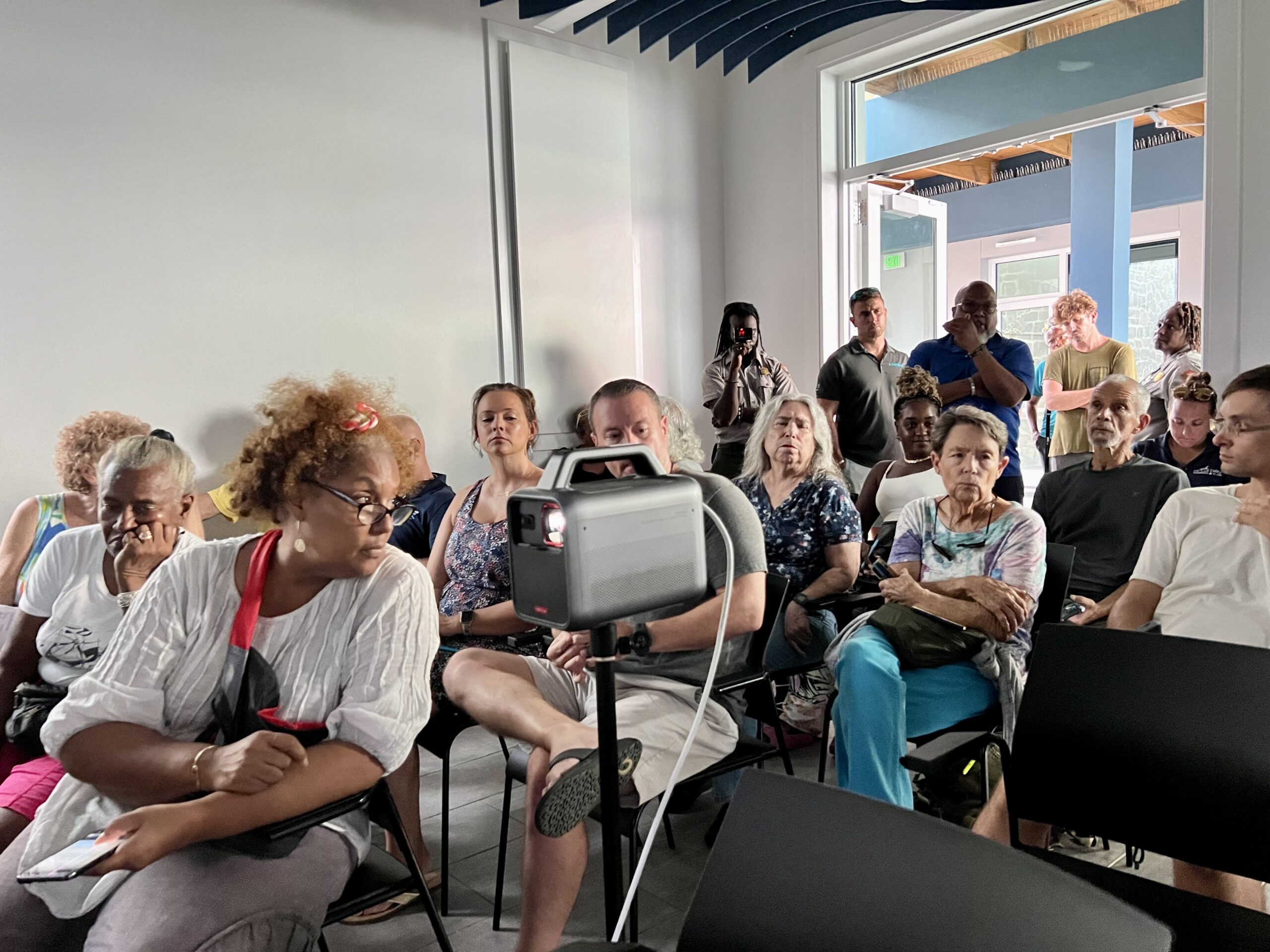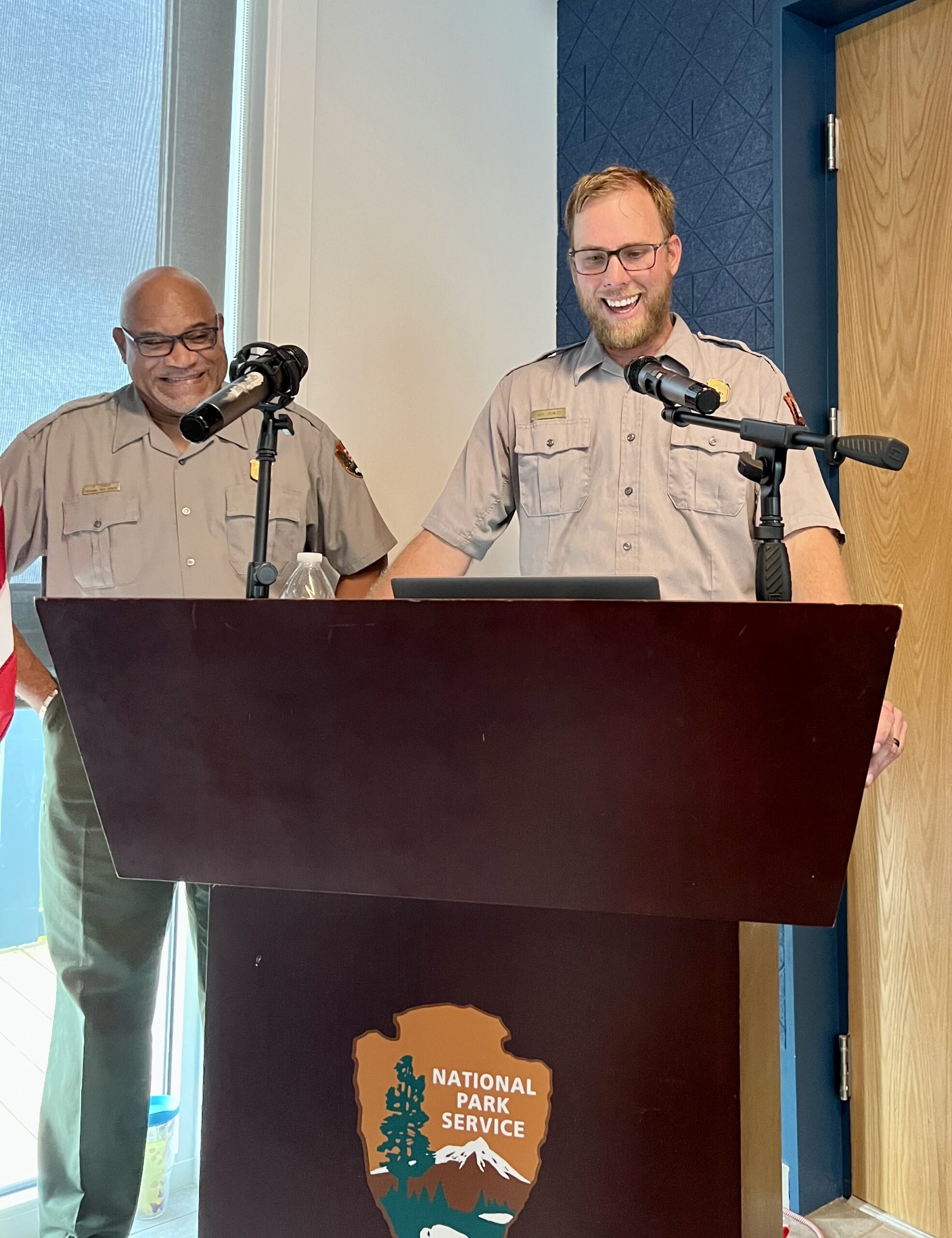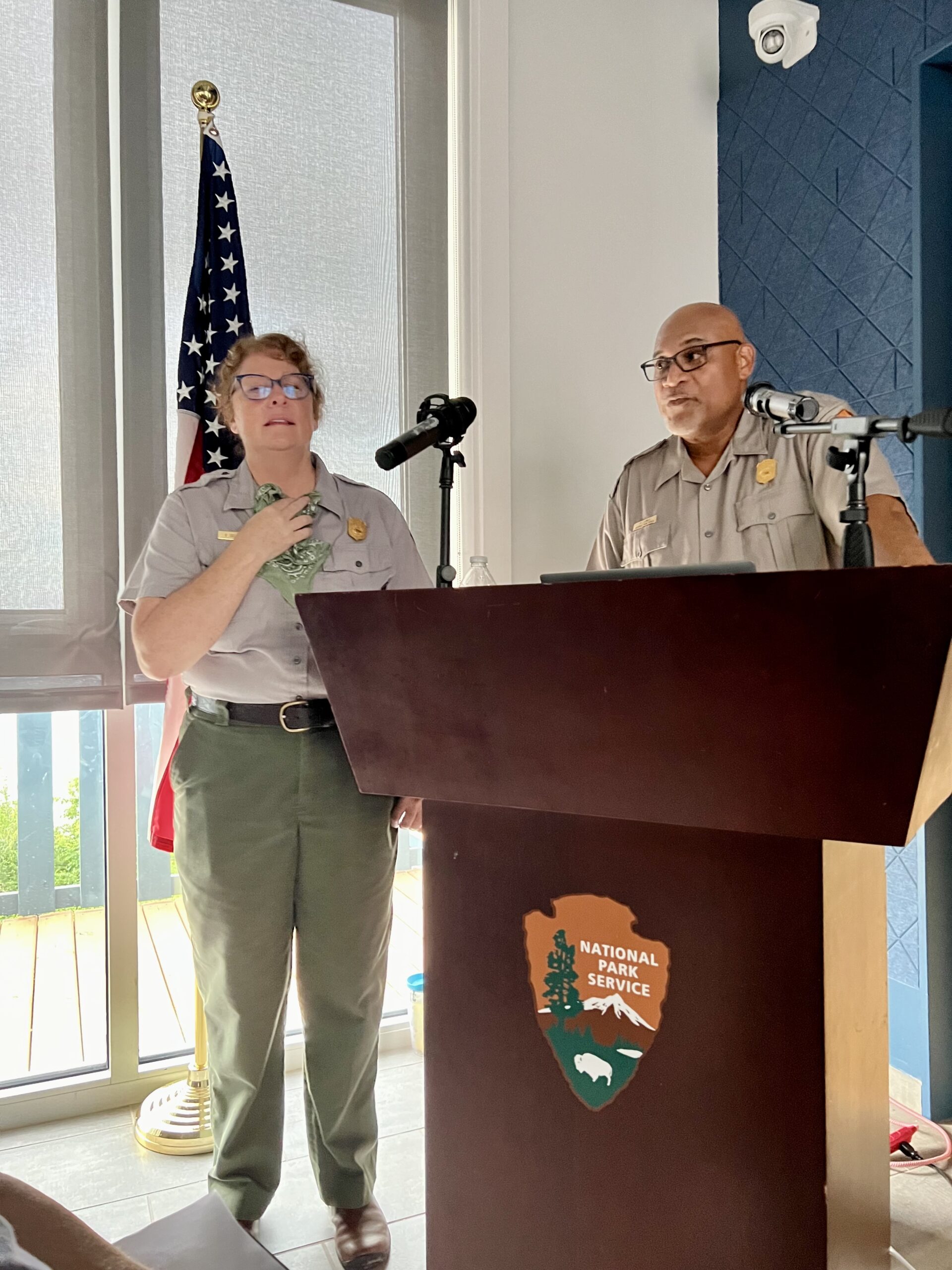
Beginning Jan. 1, 2025, all small businesses hoping to operate within the Virgin Islands National Park on St. John will have to apply for their permits online and follow “new” federal guidelines, according to park officials.
The “new” guidelines for Commercial Use Authorizations, or CUAs in Park-Speak, have already been implemented this year in dozens of parks within the National Park Service. “We’ve been holding off till the deadline,” said Penny Del Bene, superintendent of the Virgin Islands National Park.

Del Bene made her remarks in a filled-to-capacity meeting room at the new Resource Management and Science complex on St. John.
Lind Point, where the meeting was held, was under a WAPA-led rolling blackout when the Wednesday night meeting began. Del Bene said she was glad to have access to a battery-operated projector. A new generator for the facility arrived earlier that day, but it wasn’t yet operational.

As of July 1 of this year, 177 private businesses have been issued CUAs. In 2023, 206 permits were issued, according to VINP concession specialist Paul Jones.
Several dozen island residents and business owners listened while Jones described the kinds of businesses and services that are appropriate and presented the guidelines for the new procedures.

On Dec. 31, all current CUAs will become null and void, and all small businesses that operate within the park – such as boat charters, tour operators, and event coordinators – will need to go online and pay $350 to apply for a new annual permit.
Larger businesses (such as hotels and restaurants that manage their own facilities) usually operate under a different set of regulations and revenue-sharing agreements with the NPS. Cinnamon Bay Campground is an example. These concession contracts often take two to three years to finalize.
A resort being planned for Caneel Bay – still in the early conceptual stage – will likely be managed under a concession agreement once a major developer is selected.
In the past, taxis operating in the VINP have had to apply for CUAs, but Del Bene said this year the park is planning to develop a new program and issue special use permits; taxis don’t typically operate within most national parks, she said.
Mooring balls and fee collection booths at Trunk Bay also run on special use permits.
Starting in the late fall, the public will have access to the VINP’s new online CUA permit pages, and local businesses can begin the application process.
The website describing the National Park Service’s CUAs now states, “Since 2015, parks can charge a market price fee in order to recover costs associated with the administration and management of your CUA. You still pay the application fee when you submit your application, but this amount is credited back to you when you pay the market price fee at the end of the operating season.”
Fees are determined by the gross receipts of the business based on a percentage of revenue earned from in-park or park-based operations, and regular online reporting is mandatory. According to the website, “The percentage of revenue market price fee is based on the following:
- Less than $250,000 earned from park-based operations – 3 percent of gross receipts (minus application fee)
- $250,000 to $500,000 earned from park-based operations – 4 percent of gross receipts (minus application fee)
- More than $500,000 earned from park-based operations – 5 percent of gross receipts (minus application fee.)
Most of the funds collected from these permits stay within the park and are used to improve local facilities.
The guidelines also specify the levels of liability insurance applicants must carry.
Members of the audience had numerous questions for the presenters. Lenyse Shomo asked whether the park is open to expanding opportunities for businesses that provide food and drinks.
Del Bene said, “I’m not sure.” Food services are already available near VINP beaches at Cinnamon and Trunk bays, as well as on privately owned waterfront land at Maho Bay.
Plans to provide food services at Caneel Bay (until a major developer is established) are still under consideration, Del Bene said. The priority is now to assure that the park can safely open a portion of the property by the end of July, she added.

One member of the audience questioned why two businesses (ZoZo’s and the Caneel Bay Beach Club) were allowed to operate under a previous lease-holders agreement now that the property belongs to the NPS. Del Bene said they were both now operating under temporary concession agreements. “When an existing business is in place, we don’t push people out of business. We’re working to assure that [workers] will continue to be employed,” she said.
Lorelei Monsanto requested a meeting with Del Bene to discuss the kinds of businesses that were usually given CUA permits. “I’d like this park to be more open to CUAs that are more educational and less about partying. There’s a loss of local flavor in my park,” she said.
Kurt Marsh asked about preservation of historic ruins which are being slowly destroyed by creeping vegetation. Del Bene said the cost of stabilizing ruins was high, and she was hoping to form a partnership with a preservation society.
Carmen Wesselhoft Hedrington raised questions about a number of inconsistencies involving current park policies, such as regulations preventing limousines from operating within the park while taxis are permitted; she also criticized unpublicized changes in hours for fee collection at Trunk Bay.
Elise Dupont asked whether the park had set limits on the number of users at different places in the park, such as Trunk Bay, which is popular with cruise ship passengers, and whether these limits were being enforced.
Jones said there was a plan establishing maximum use levels long ago, but “Times have changed.” The park can continue to manage use levels to some extent by limiting the number of CUAs it issues, he added.
Del Bene said the general management plan enacted in 1983 had not been updated, but there was a more recent foundational document that helps guide park managers.
The Wednesday night meeting was one of a series of public events scheduled by the VINP for the second Wednesday of every month through November.


